Aliens Among Us
A photo essay of insects—extremely bug and incredibly close
In 1914, the National Geographic Society published the first book of macrophotography dedicated to insects. The authors, a high-powered botanist couple named Marian and David Fairchild, described the project as "a picture book produced in the playtime hours of two busy people." Which is sort of true, if you consider it a leisure activity to build a 24-foot-long modular camera and then spend hours in the hot sun adjusting lenses and posing insect specimens.
At the time, insects were often described as being "at war" with humanity. "It is not to be wondered at that we find among them dangerous and tireless competitors with ourselves for the use and control of the earth," entomologist Stephen Alfred Forbes wrote in 1915. "If they want our crops, they still help themselves to them. If they wish the blood of our domestic animals, they pump it out of the veins of our cattle and our horses at their leisure and under our very eyes. If they choose to take up their abode with us, we cannot wholly keep them out of the houses we live in. We cannot even protect our very persons from their annoying and pestiferous attacks."
In contrast, the Fairchilds began their collection of larger-than-life insects with a plea for empathy. "The pictures in this book," they wrote, "are portraits of creatures which are as much the real inhabitants of the world as we are, and have all the rights of ownership that we have, but, because their own struggle for existence so often crosses ours, many of them are our enemies." While the earnest message was undercut by the title of the project—Book of Monsters—the couple's delight carried through. "How marvelously equipped!" they exclaimed under a photo of a katydid, as though they were promoting a luxury vehicle.
Insects live at a radically different scale than humans do—in size, in life span, and in sheer numbers. There is power in this divergence. "People tend to equate small size with unimportance," contemporary entomologist May Berenbaum has said, "but that's simply not a biologically realistic point of view."
There is also beauty in the spatial gulf between the world that insects inhabit and our own. In the early 1990s, biologists Claude Nuridsany and Marie Pérennou began filming the insects living in a French meadow with custom-designed macro cameras and unexpectedly created a 1996 hit that still shows up on the art-house circuit. "See whatever other movies you want to this year. Microcosmos is in a category of its own," the film critic Roger Ebert wrote in a passionate review. "Where did these forms come from? These legs—two, four, six, a thousand? Eyes like bombardier's turrets? Giant pincers? Honeyed secretions? . . . You may leave this movie feeling a little like a god. Or like a big, inelegant, and energy-inefficient hunk of clunky design."
Insect portraiture is still relatively rare compared with other forms of wildlife photography. But what it lacks in megafauna charisma it makes up for in alien glamour. A stereotypical wildlife photographer may travel far and wide in search of exotic species. When it comes to insects, anyone with a lot of patience and access to a macro lens can photograph a completely familiar yet ravishingly strange creature without going much farther than their windowsill.
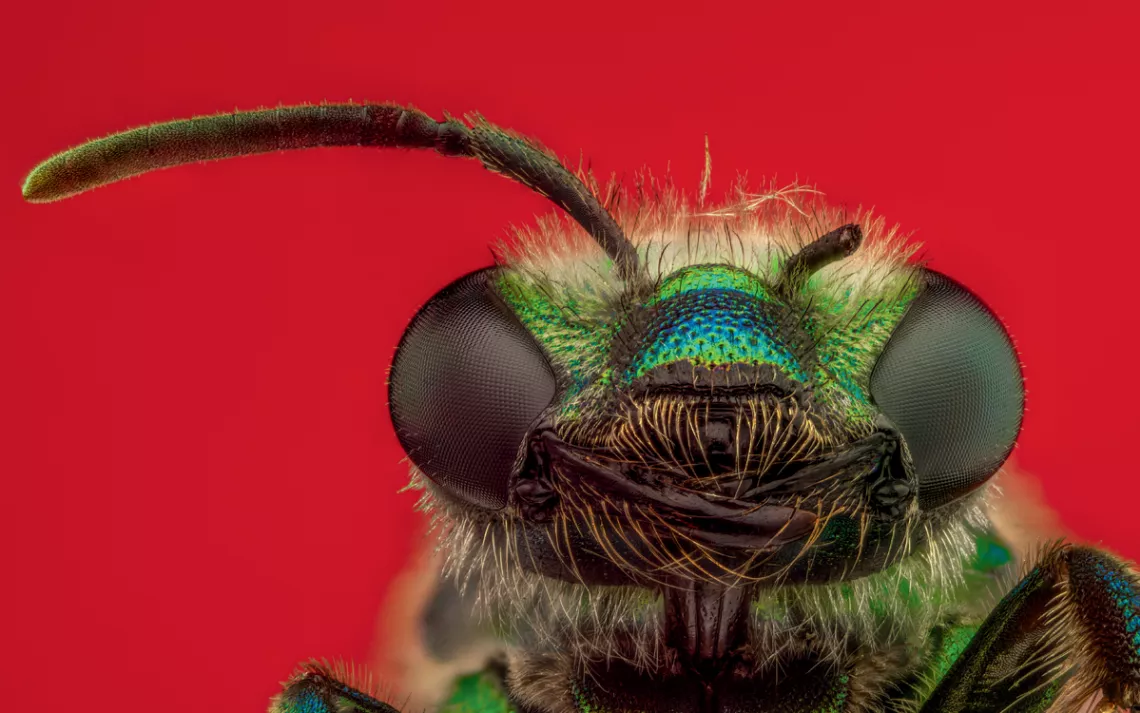
Green orchid bee (Euglossa dilemma). Photographer: Pablo N. Piedra
Orchid bees are found mostly in the tropics of Central and South America. Male orchid bees are notable for their habit of collecting fragrant volatile compounds—not just from orchids but also from wood and other objects that are in a state of decay.
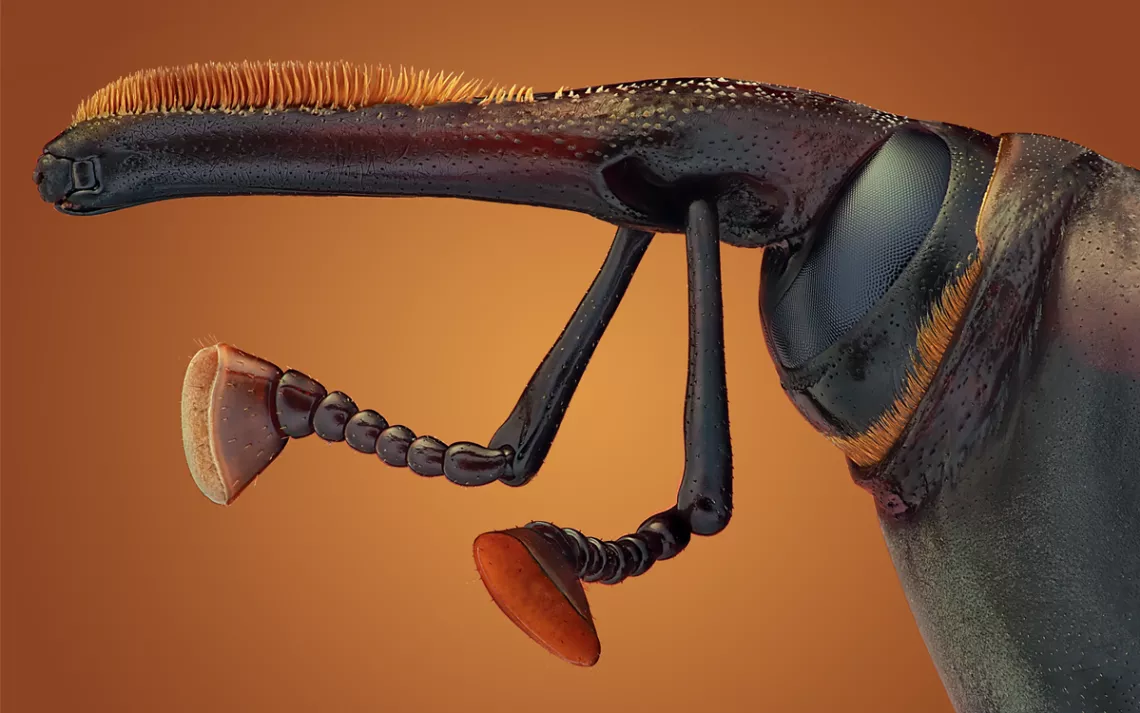
Red palm weevil (Rhynchophorus ferrugineus). Photographer: John-Oliver Dum
In this extreme close-up of a red palm weevil, all you can see are its snout and two antennae—its massive beetle body is out of the frame. As forests are being replaced by palm plantations, the palm weevil's habitat is expanding, much to the chagrin of the palm oil industry, which considers the insect a horrible pest. The larvae of the red palm weevil (commonly known as sago worms) are so delicious that some growers in Southeast Asia farm the weevils as livestock.
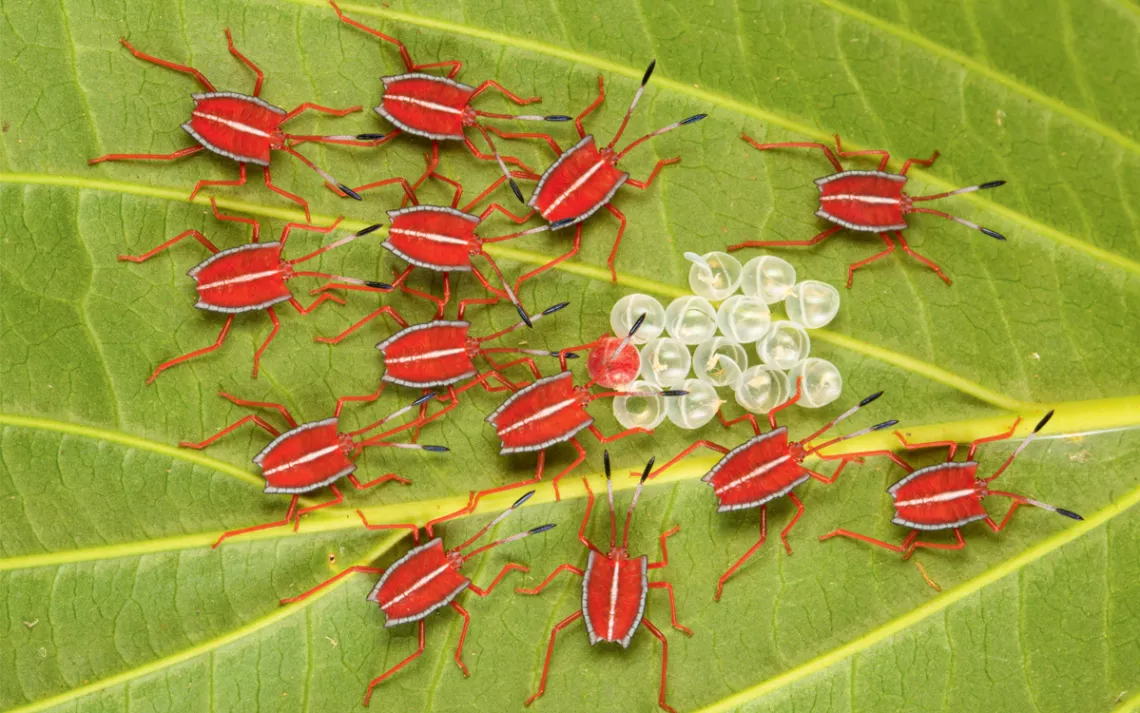
Giant shield bug nymphs (Pycanum sp.). Photographer: Alex Hyde/Nature Picture Library
Here, a clutch of nymphs cluster around the eggs from which they just hatched in Borneo's Danum Valley. (One nymph is still trying to emerge.) Like many other shield bugs around the world, these produce a stink to discourage would-be predators. The bigger the crowd, the bigger the stink.
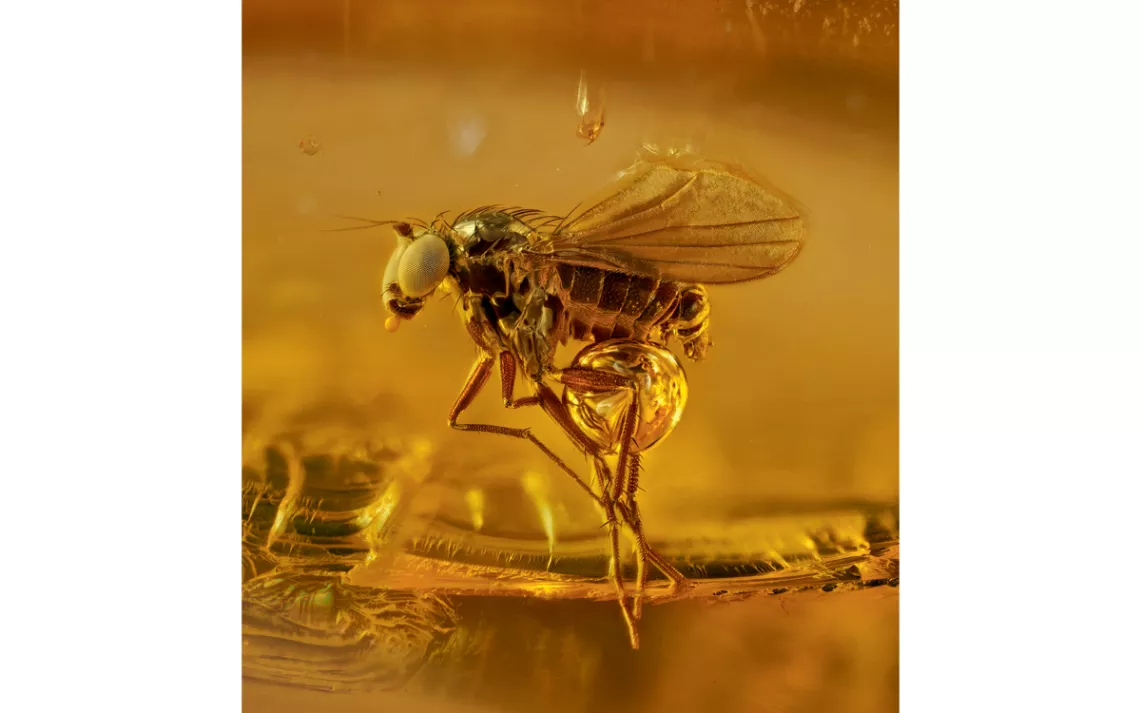
Dark-winged fungus gnat (Bradysia sp.). Photographer: Levon Biss
This gnat was encased in amber between 40 and 45 million years ago in what is now northern Europe. Today, its relatives in the family Sciaridae are found nearly everywhere in the world. Forests, swamps, and moist meadows are their native habitats, but the gnats' ability to thrive in potting soil makes them a well-known pest in plant nurseries.
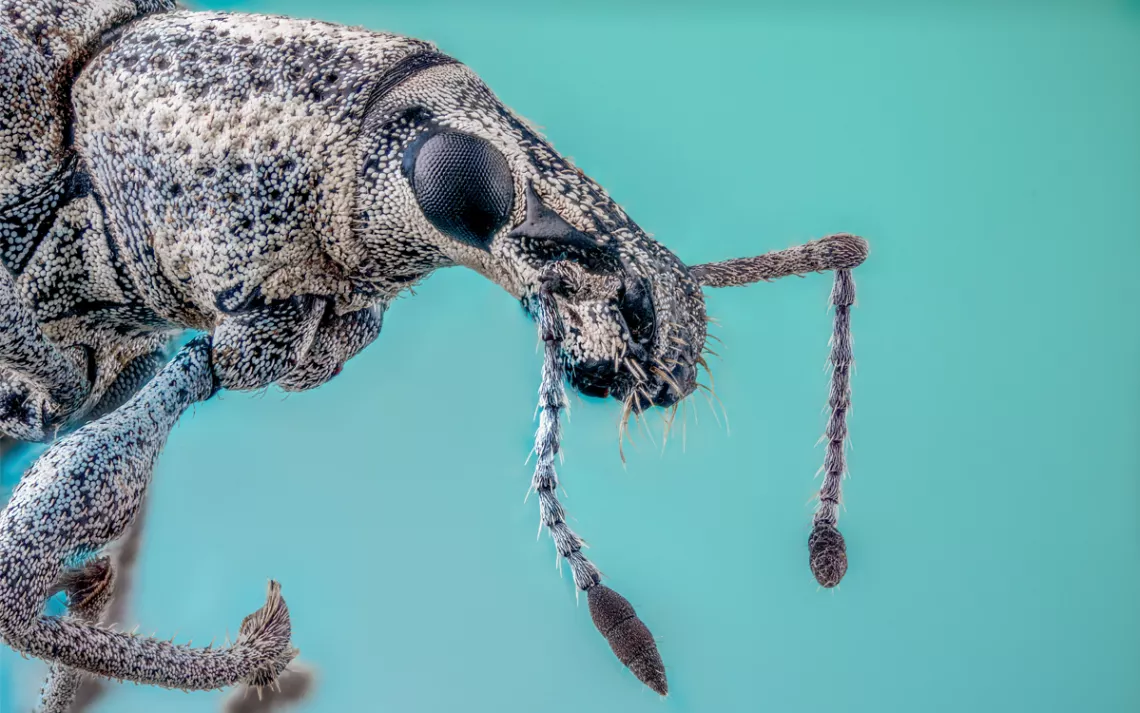
Snout beetle. Photographer: Pablo N. Piedra
More commonly known as weevils, snout beetles are part of the family Curculionidae, which includes 80,000-plus species (including the red palm weevil, shown earlier). The beetle pictured is likely from the subfamily Entiminae and is known in Costa Rica as a vaquita (little cow).
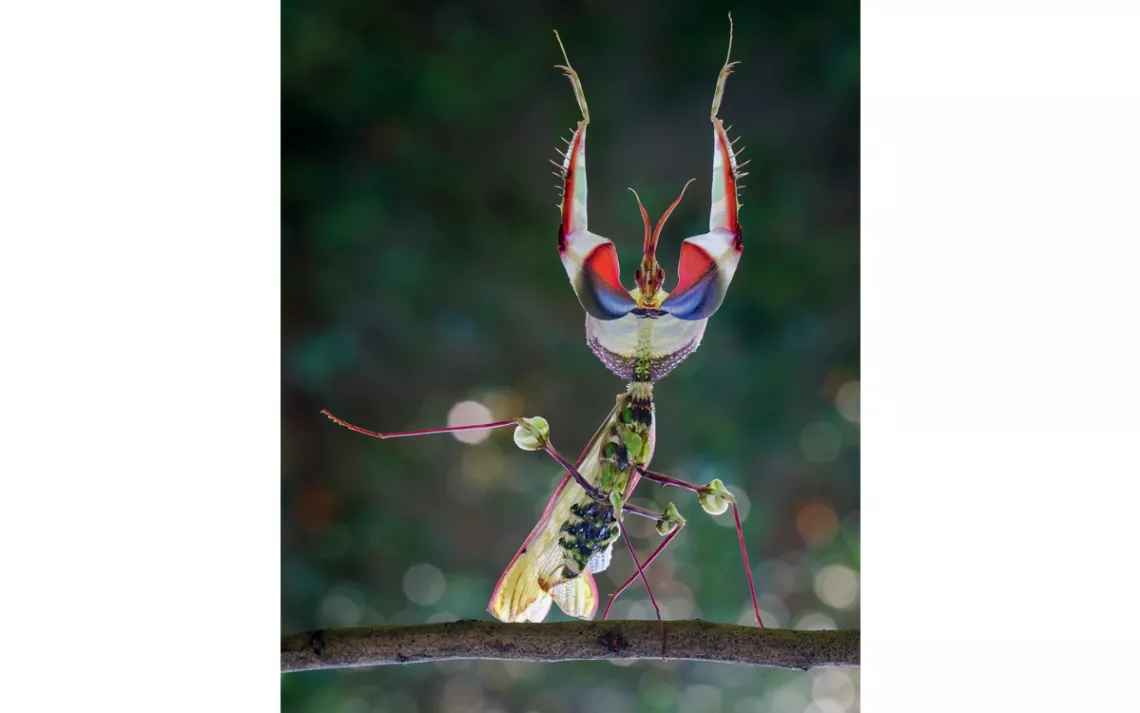
Devil's flower mantis (Idolomantis diabolica). Photographer: Andiyan Lutfi
Photographed here in a defensive pose, the devil's flower mantis usually remains completely immobile, waiting for a fly to mistake it for a flower. This mantis's flashy coloring makes it popular with people who keep insects as pets.
This article appeared in the Spring quarterly edition with the headline "Aliens Among Us."
 The Magazine of The Sierra Club
The Magazine of The Sierra Club



